





What Do You Do at the? WH Questions & Places – Printable PDF
₹80
₹160
50% off
0 (0 ratings)
Grade Levels
Pre-K - Grade 1 (Ages 3-7)
Content Overview
Format: Printable PDF, Total Pages: 11, Features: 33 WH questions with real-world locations and answers, including grocery store, school, park, hospital, post office, and more.
Categories
Pages from the Resource
This WH Questions printable teaches kids about places and their functions in a fun, interactive way. Children will learn to answer "What do you do at the hospital?" → "You see a doctor when you're sick." This resource enhances language skills, comprehension, and functional knowledge, making it ideal for speech therapy, early learning, and ESL students.

Page 1

Page 2
What Users Say
0
0 ratings
5
0+
4
0+
3
0+
2
0+
1
0+
5 Stars
Product is Good to use.
10 months ago
Varsha Parent
Similar Products
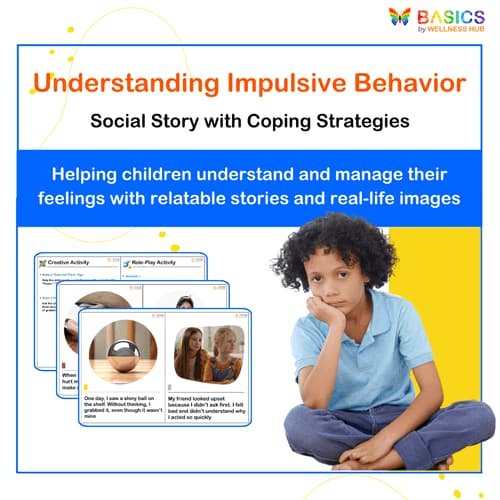
Understanding Impulsive Behavior: Social Story with Coping Strategies
₹ 80.00
₹ 160.00
50% off
4.9 (42 ratings)
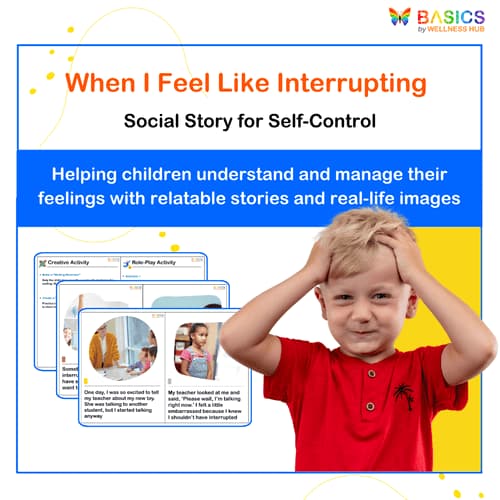
When I Feel Like Interrupting – Social Story for Self-Control
₹ 80.00
₹ 160.00
50% off
4.8 (60 ratings)
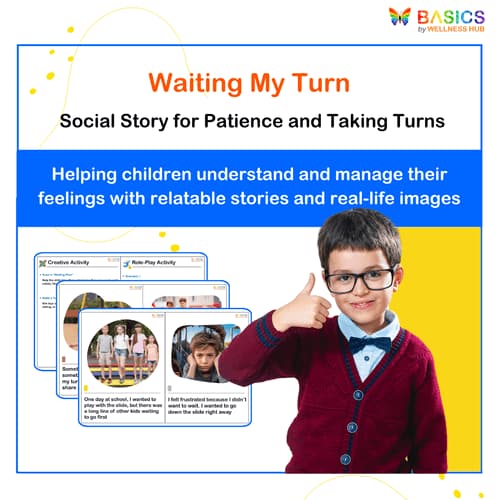
Waiting My Turn – Social Story for Patience and Taking Turns
₹ 80.00
₹ 160.00
50% off
4.7 (56 ratings)
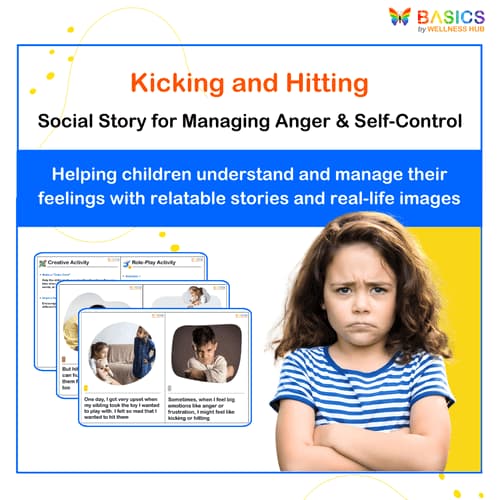
Kicking and Hitting – Social Story for Managing Anger & Self-Control
₹ 80.00
₹ 160.00
50% off
4.6 (52 ratings)
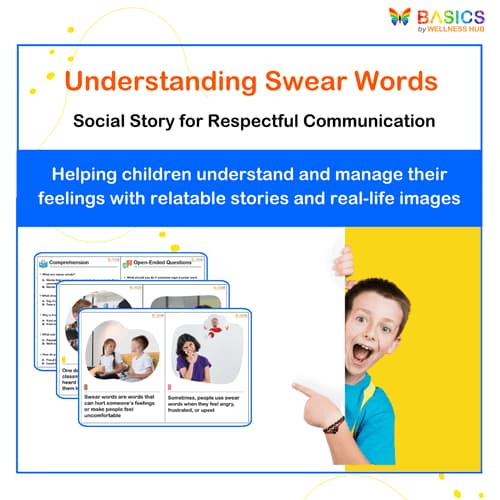
Understanding Swear Words – Social Story for Respectful Communication
₹ 80.00
₹ 160.00
50% off
4.9 (48 ratings)
About the Product
Understanding WH questions is an essential part of early childhood language development, and answering functional place-related questions plays a key role in helping children understand the world around them. With "What Do You Do at the?" printable, children can practice answering WH questions about various places and their related actions in everyday life.
This 11-page printable provides a fun and engaging way for children to learn the functions of different locations such as the grocery store, hospital, post office, and park. By associating each place with its purpose, children will develop essential language skills, improve comprehension, and gain a better understanding of real-world activities.
This resource is ideal for:
- Speech therapy sessions
- Early childhood education
- ESL (English as a second language) learners
- Homeschooling environments
With real-life scenarios and visually engaging illustrations, this printable helps children actively engage with the material, improving both expressive and receptive language skills.
Product Details
Format: Printable PDF
Total Pages: 11
Total Sets: 33
Content: Each page features 3 WH questions related to different places such as:
- Grocery Store
- Hospital
- School
- Park
- Post Office
- Bank
- And many more everyday places!
Key Features:
- Illustrated WH questions with corresponding answers
- Questions like: "What do you do at the grocery store?"
Answer: "You buy food and other things for your home." - The resource covers multiple locations and their functions across 11 pages, promoting place-based learning for children.
Who Can Benefit:
- Preschoolers & Kindergarteners (Ages 3-7)
- Children with special needs, including those in speech therapy
- ESL learners needing visual cues to understand everyday places
- Parents, teachers, and therapists who want to teach practical language related to real-world scenarios
Educational Benefits
The "What Do You Do at the?" printable provides numerous educational benefits that extend across multiple developmental areas:
1. Language Development
- WH Questions Mastery: Teaches children how to answer functional questions related to various places.
- Expands Vocabulary: Introduces children to key vocabulary related to everyday places, fostering a broader lexicon.
- Sentence Formation: Encourages children to respond in complete sentences instead of one-word answers, improving their grammar and sentence-building
2. Cognitive & Social Skills
- Understanding of Real-World Scenarios: Helps children relate to places and their functions in the real world, improving their cognitive reasoning.
- Social-Emotional Learning: Encourages children to discuss and engage in everyday activities, fostering social skills like communication and role-play.
3. Speech & Communication
- Expressive Language Skills: By answering WH questions, children practice articulation and expand their vocabulary.
- Receptive Language Skills: Children learn to comprehend questions and match answers with the right context.
- Visual Learning: The inclusion of illustrations helps children visualize and understand the connection between objects, actions, and places.
4. Special Education & ESL Learning
- Functional Object Use & Learning: This printable is a great way for ESL students and children with language delays to associate everyday actions with places in a structured way.
- Supports Special Education: Designed for children with special needs, especially those working on communication goals or language comprehension.
Instructions for Use
How to Use This Resource:
- Print the PDF on standard letter-sized paper (8.5 x 11 inches).
- Cut out each question and answer section if you prefer using them as flashcards. Alternatively, you can use the printable as is.
- Ask the child a WH question, such as "What do you do at the park?"
- Encourage the child to answer in full sentences, e.g., "You play games and run at the park."
- Use the accompanying images as visual cues to help children understand the context of the place being discussed.
- Repeat the process with other questions on the page.
Interactive Activities:
- Role-Playing: Ask the child to act out the actions associated with each place. For example, at the grocery store, they can pretend to shop for groceries or at the post office, they can mimic sending a letter.
- Real-Life Object Hunt: After discussing the question, ask the child to find objects around the house or in the classroom that relate to each location (e.g., grocery items, a school bag, etc.).
- Sentence Expansion: Once the child has answered the basic question, expand the sentence with additional information like:
- "What do you do at the bank?"
- "You go there to save money, cash a check, or make deposits."
Activities Using the Resource
This What Do You Do at the? printable is a flexible tool for early childhood education, speech therapy, and ESL learning. It provides a wide range of activities that foster language development, functional comprehension, and interactive learning. Below are some ways to use the resource effectively:
Basic Question and Answer Practice
Objective: Help children learn to answer WH questions related to everyday places.
How to Play:
- Show the child a question card (e.g., "What do you do at the grocery store?").
- Ask the question and give them a moment to look at the image and respond.
- Once the child answers, reinforce their response with the correct answer sentence (e.g., "You buy food and other things for your home.").
- Praise the child for a correct response and ask follow-up questions to expand their answer.
✔ Skills Developed:
- WH question comprehension
- Sentence structure
- Object-function association
Matching Game – Question and Answer Pairing
Objective: Strengthen the child’s understanding of object-function relationships by matching questions with their corresponding answers.
How to Play:
- Print out the question and answer cards from the resource.
- Shuffle the cards and ask the child to match the question (e.g., "What do you do at the park?") with the correct answer (e.g., "You play and have fun.").
- Review each pair and ask the child to repeat the question and answer in their own words.
- For a challenging twist, time the child to see how quickly they can match all the pairs!
✔ Skills Developed:
- Cognitive processing
- Vocabulary building
- Sentence expansion
Role-Playing Activities
Objective: Engage children in hands-on learning through real-world activities associated with the places they are learning about.
How to Play:
- Ask the child, "What do you do at the post office?"
- Act out the response by going through the steps (e.g., pretending to stand in line, talking to the cashier, mailing a letter).
- Encourage the child to mimic the actions while repeating the question and answer.
- Add extra steps for more engagement (e.g., "At the grocery store, you pick your items, pay, and then pack them.").
✔ Skills Developed:
- Social-emotional skills
- Fine and gross motor coordination
- Practical comprehension
Sentence Expansion & Storytelling
Objective: Encourage sentence-building and creative thinking by asking children to expand on the answers.
How to Play:
- After a child responds to a question, ask them to expand on their sentence.
- Example: "What do you do at the school?" → "You go there to learn." → Expand: "You go there to learn new things, meet friends, and play during recess."
- Encourage the child to tell a short story about what they do in these places (e.g., "Tell me about your day at the park!").
- Have the child describe their feelings or actions in relation to the place (e.g., "What do you do at the playground?" → "You slide down the slide, swing on the swing, and have so much fun!").
✔ Skills Developed:
- Sentence construction
- Vocabulary expansion
- Storytelling and creativity
Real-Life Object Hunt
Objective: Reinforce learning by asking the child to find real-life objects related to each place and function.
How to Play:
- Use the printable to ask questions about various locations (e.g., "What do you do at the school?").
- Have the child find real objects around the house or classroom that correspond to the activity (e.g., a pencil for school, groceries for the grocery store).
- Ask the child to demonstrate how to use the object (e.g., "What do you do with the pencil?" → "You write with it.").
✔ Skills Developed:
- Object-function recognition
- Sensory learning
- Object manipulation
FAQs
Q1. Who can use this resource?
- ✔ Preschoolers, Kindergarteners, and 1st Graders (Ages 3-7)
- ✔ Children in speech therapy or with speech delays
- ✔ ESL learners needing to practice vocabulary and sentence structure
- ✔ Parents, teachers, and caregivers looking for an interactive tool to enhance language development and functional object understanding
- ✔ Homeschoolers and special education teachers
Q2. How does this printable help children?
The What Do You Do at the? printable helps children:
- Answer WH questions related to everyday places and their functions
- Develop vocabulary and practice sentence formation
- Understand practical life skills by linking objects to their appropriate use (e.g., "What do you do at the grocery store?" → "You buy food.")
- Build comprehension and expressive language skills in a structured, visual manner
Q3. Can I use this resource for speech therapy?
Yes! This resource is perfect for speech therapy sessions because:
- It provides structured practice for answering functional WH questions
- The visual aids help children with speech delays and autism connect words to actions and places
- It’s also effective for improving sentence construction and language comprehension
Q4. Can this resource be used for ESL learners?
Absolutely! This printable is fantastic for ESL learners as it:
- Introduces everyday vocabulary related to common places
- Provides simple and clear sentences that help learners practice sentence structure
- Reinforces functional language skills they will use in daily life
Q5. Can I print and laminate this resource
Yes! We recommend laminating the pages to ensure durability for repeated use. You can also print multiple copies for use in different learning centers, homes, or classrooms.
Usage Rights and Restrictions
Allowed Uses:
✔ Personal use (home learning, therapy sessions)
✔ Classroom and homeschooling use
✔ Use in speech therapy, special education, and ESL sessions
Restricted Uses:
❌ Redistribution or reselling of this resource
❌ Uploading to third-party websites for free distribution
❌ Modifying or selling this resource for commercial purposes
Conclusion
The "What Do You Do at the?" WH Questions & Places Printable is a comprehensive educational resource designed to improve children’s language skills and functional understanding of places. Perfect for speech therapy, ESL learning, and early childhood education, this printable offers:
- 33 interactive WH question sets
- Engaging visual learning to help kids understand places and their related actions
- Multiple activities for reinforcing comprehension and communication skills
With clear visuals, structured practice, and real-world application, this resource will make learning about everyday places both fun and effective.



